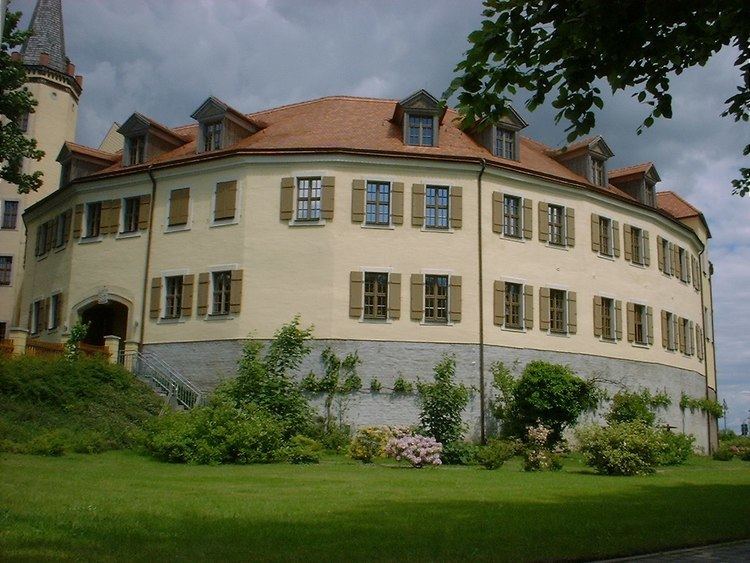District Wittenberg Time zone CET/CEST (UTC+1/+2) Population 14,562 (31 Dec 2008) | Elevation 72 m (236 ft) Area 351.9 km² Local time Saturday 6:54 AM | |
 | ||
Postal codes 06917, 06918, 06926, 06928 Weather 1°C, Wind W at 3 km/h, 93% Humidity | ||
Jessen is a municipality on the Black Elster river and lies in the eastern part of Saxony-Anhalt in the district of Wittenberg.
Contents
- Map of Jessen Germany
- Geography
- History
- Economy and infrastructure
- Culture and Sightseeing
- Personalities
- Sundry
- References
Map of Jessen, Germany
Geography
Jessen is an amalgamated municipality, and has the following subdivisions:
History
The first documentary evidence of Jessen's existence dates to 1217. On the night of 20 to 21 September 1729, much of the town was destroyed in a fire. After belonging to Saxony for centuries, Jessen became Prussian in 1816.
In 1945, it became part of the state of Saxony-Anhalt. In 1952, owing to East German administrative reforms, Jessen became a district capital in the Cottbus region (Cottbus is nowadays in Brandenburg). In 1990, Jessen once again became part of the newly-refounded state of Saxony-Anhalt. In 1992 came the amalgamation of the communities of Grabo, Gorsdorf-Hemsendorf, Lindwerder and Großkorga, and in 1993, Schweinitz, Gerbisbach, Klossa, Schöneicho, Steinsdorf and Dixförda. With the district reform in 1994, Jessen became part of Wittenberg district, as well as having a further three communities melded with it, namely Battin, Düßnitz and Kleindröben-Mauken. In 1999 came further amalgamations: Arnsdorf, Leipa and Ruhlsdorf mit Rehain. On 1 March 2004 came a further 12, among them Seyda, Holzdorf and Linda (Elster). Some of these formerly independent communities themselves each consisted of more than one centre, and so Jessen now has a total of 47 Stadtteile (constituent communities).
Economy and infrastructure
Established businesses are mostly small and mid-sized concerns in metalworking, building, dairy processing and drink production. There are also, however, bigger enterprises in agriculture.
Culture and Sightseeing
Personalities
Sundry
The town is Germany's twelfth-largest municipality by land area, and is thereby about 3 km² bigger than Munich.
